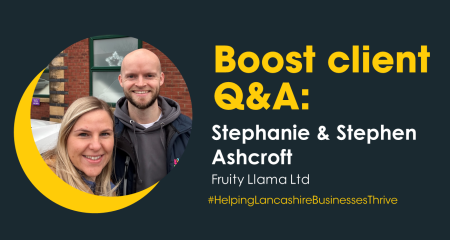
BOOST SPOTLIGHT | Business Planning Lee Petts is managing director of 52M Consulting, a Preston-based marketing and communications business and Boost & Co member. As part of Boost's spotlight on business planning, he shares his advice on writing a strategy for growth.
Whether you're a start-up or an established business thinking about the year ahead and beyond, having a written business plan can make a big difference to your success. The trouble is, there's a lot of conflicting advice out there about what a plan should contain, how much detail it should include and how long it should be. Our advice? If it's too long and wordy, you'll spend ages writing it and then even longer ignoring it. The best business (sales, marketing, PR, hiring or any other sort of) plans are those that you refer to regularly to keep track of your progress.
So, where to start when thinking about your business plan? Easy. Work out what your expenses are going to be for the plan period. Then calculate your break even point. Divide this into equal monthly amounts and that's your minimum sales target. Add a stretch target that will leave you with a buoyant yet realistic profit. Once you've got the numbers sorted, it's time to think about how you're going to achieve them and that's where strategy comes in. People are sometimes mystified by what a strategy is, but in the end it's simply a roadmap to get you from A to B based on the examination of different alternatives. Here's an example: you're in Preston and want to get to London tomorrow by 2pm (so you know where you're starting and where you want to be). You could fly, drive, take a coach or travel by train, and whilst considering the different options, you'll take into account things like cost and ease but also whether they can guarantee you'll arrive at your destination on time. Eventually, let's say you decide to drive - that's your strategy right there. The decision over exactly which roads you'll use, how many rest stops you'll take and where are the equivalent of your more granular 'tactical' or 'operational' plan, and contain milestones and other cues that will inform you about your progress.
Now apply that logic to your business: you're a start-up with no sales, and your break even plus stretch target is £7,000 a month, and so you need 11 customers a month paying around £630 each (your start and end points). You could find customers by attending networking events, exhibiting at trade fairs, advertising online or a combination (these are your 'strategic choices'). Let's say you decide that trade fairs is your preference, that's your strategy. Which ones exactly, how big a stand you'll take, what literature you'll use, how many in a year, where and when - they're all part of your tactical or operational plans.
By measuring your progress at the tactical level, and aligning that with the numbers (customers and spend), you can determine whether or not your strategy is working for you and, if not, think about refining it. Going back to our original example, and the trip from Preston to London, if, after 3 hours in the car on your chosen route, you're still on the M6 in Lancashire, the feedback from your tactical plan should be telling you that perhaps your strategy isn't right. In that case, you can review your earlier strategic options and shift slightly - deciding, for example, to make the remainder of the journey by train. So now that's your strategy and it needs a new tactical plan - in this case, exiting the motorway, driving to Wigan and catching a train on the West Coast Mainline from there. It's the same in your business. Decide on a destination, consider the alternatives for getting there, pick one, work out the details and then head-off, remembering to check your progress in order to stay on track.
And if you hit a roadblock along the way or need a new destination, don't despair, just revisit your earlier choices and flex accordingly.




The website uses cookies.
Some are used for statistical purposes and others are set up by third party services. By clicking 'Accept all & close', you accept the use of cookies. For more information on how we use and manage cookies, please read our Cookie Policy.